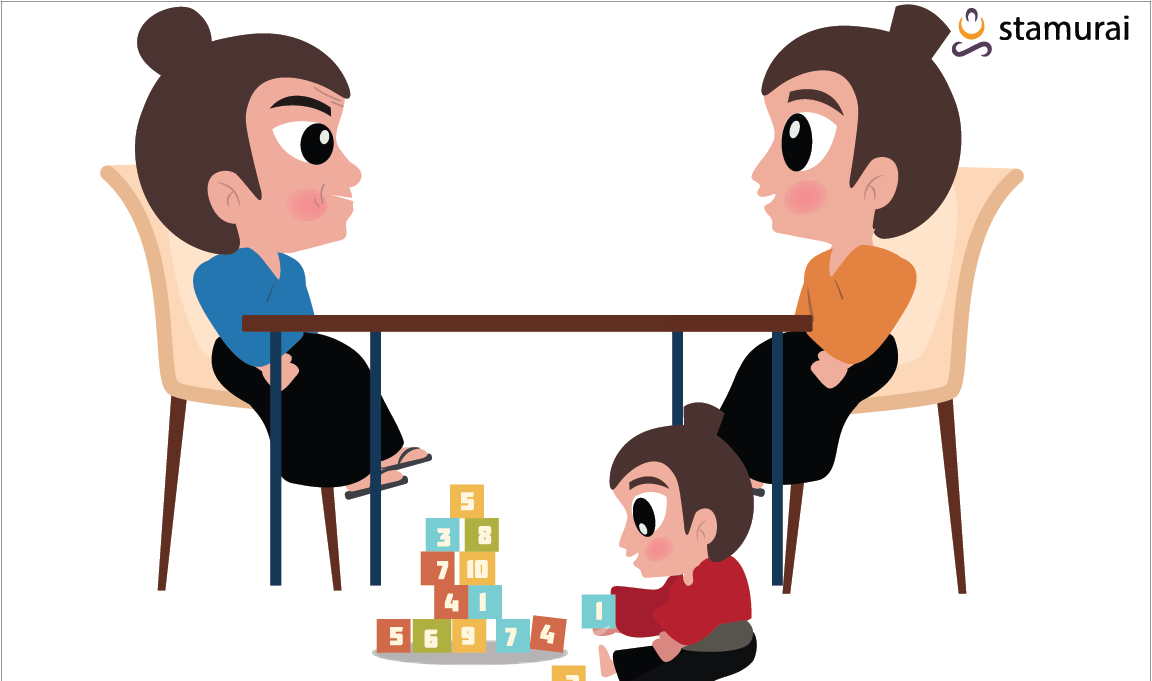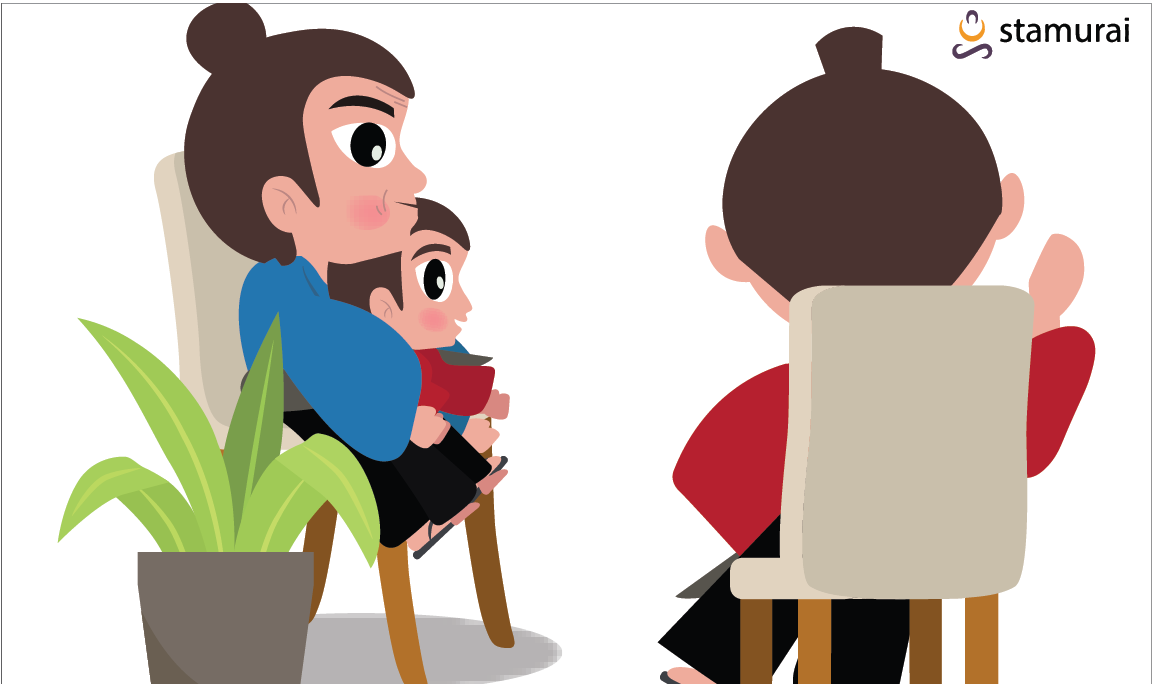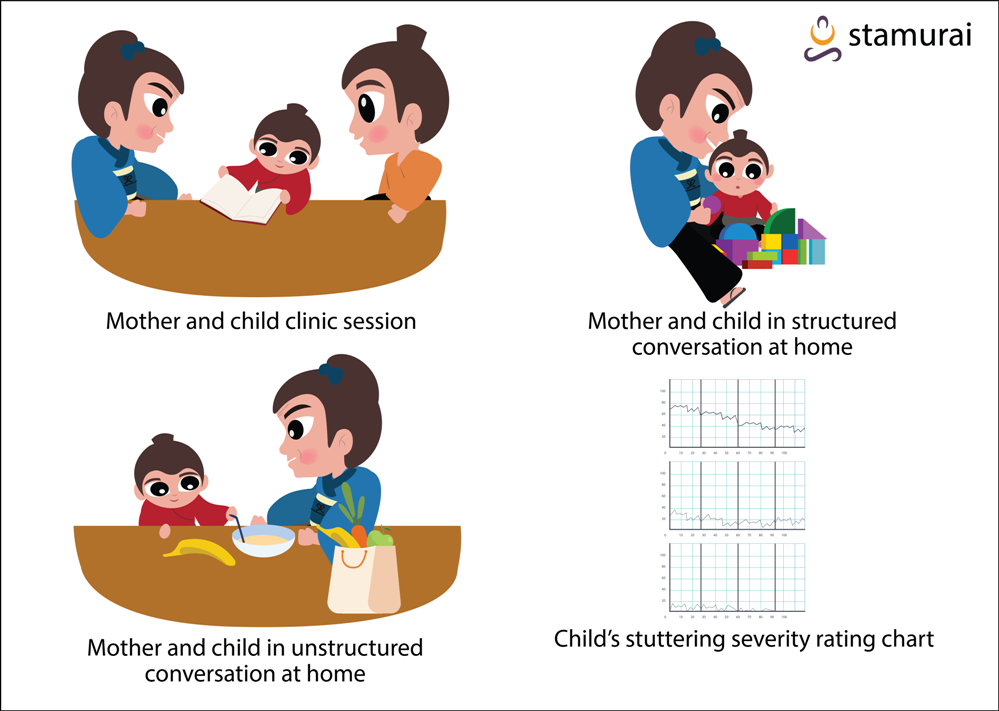Many preschool-aged children stutter. They may repeat whole or part words, use interjections like “uh” and “um”, or show difficulty in finding the right word.
For more than 75% of the preschoolers (children between the ages of 2 and 6 years), the stuttering will go away on its own without any intervention. About 25% of preschoolers who stutter will continue to stutter till adulthood or require speech therapy for recovery of fluent speech.
What Are The Warning Signs Of Persistent Stuttering?
Stuttering can become a serious problem if parents leave the recovery to chance. Parents/guardians should seek the counsel of a speech therapist or speech-language pathologist (SLP) if –
- The child has another family member who stutters
- The stuttering has begun after the age of 3 years
- The child has been stuttering for longer than 6 months
- The child is male
- The kid has other speech/sound disorders
- Their language skills are delayed or advanced for their age
Natural recovery for a child who has begun stuttering should take no longer than 6 months. So, if your child has been stuttering for longer, you should consult an SLP or speech therapist immediately.
The course and method of stuttering therapy can vary depending on the age of the individual who stutters. However, for preschoolers, speech therapists & speech-language pathologists (SLPs) use a few tried and tested programs.
Indirect Approaches for Treating Stuttering In Preschool-Aged Children
Indirect approaches include modifying the child’s environment. The method avoids direct interaction with the child. Indirect therapy is recommended for children who are unaware of their stuttering or do not show any frustration due to their speech disfluencies.

Indirect methods of the stuttering treatment target the children's shame, fears, language, and feelings during daily interactions.
It also targets the parents’ speaking patterns and aims to reduce the speaking rate of the child.
Several clinicians prefer the indirect approach since it puts less pressure on the child.
Direct Approaches for the Treatment of Stuttering In Preschoolers
Direct approaches target the preschooler’s speech behaviors. It is especially effective when the child is aware of their stuttering and shows discontent with the speech disfluency.
Speech therapists opt for direct approaches when children begin exhibiting secondary behaviors of stuttering like rapid blinking, quivering of lips, or nodding of the head.
An SLP or a parent can provide direct treatment for stuttering. Some direct approaches include modeling reduced speaking rates, allowing the preschooler to finish speaking without any interruptions, taking turns while talking, increasing pauses during speaking, and relaxed breathing.
Some of the most popular direct treatment approaches include the Lidcombe program and the Gradual Increase in Length of Complexity of Utterance (GILCU).
However, one should remember that direct methods like Lidcombe and GILCU begin losing effectiveness if the client is above 5 years of age.
Family-Focused Treatment and Client Counseling
Parental intervention is preferred for the treatment of stuttering of preschool-aged children. The two major components of the parental intervention are –
- Their feelings about stuttering, the child who stutters, and themselves.
- The parents’ behavior towards the child when they are stuttering and when they aren’t stuttering.
It is important that during family-focused treatment, the parents don't criticize the child, scold them or ask them to slow down repeatedly.

Charles Van Riper also suggested that reducing the pressure, the number of interruptions, high rate of speech, punishments for stuttering instances, and completing the child's speech can contribute towards the child's fluency.
As per the family-focused treatment, parents need to learn about speech disfluencies. They need to gather knowledge about what they can contribute to the child's fluent speech and communication.
This treatment typically includes strategies to help the parents reduce their anxiety towards stuttering and modify their speaking patterns.
Counseling is an integral aspect of stuttering treatment for preschoolers. It can help both parents and children. Psychological counseling can help everyone involved in the dynamics make emotional adjustments.
Counseling young children can be challenging. It is the SLP's responsibility to listen to their narrative to understand the child's anxiety, fear, and tension. The aim of counseling provided by an SLP or speech therapist is to ensure that it doesn't become an internal trait.
Counseling for parents should target emotional adjustments necessary for fear, anxiety, guilt, depression, or isolation they might be feeling due to the child's core and secondary behaviors.
Support Groups for Stuttering
Support groups for stuttering are instrumental in helping parents of children who stutter.
Connecting with people who are experiencing similar situations and emotions can help the parents gain new perspectives on stuttering and stuttering therapy.
Members of support groups may also gain information regarding state-of-the-art stuttering treatment programs. They may find new literature on the causes, effects, and treatment of stuttering.
The Lidcombe Program
The Lidcombe Program is a parent-directed behavior modification program that is highly effective for toddlers and young children.
The SLP teaches and guides the parent(s) as they deliver stuttering therapy to the child. The parents have to learn how to measure the severity of their child’s stuttering in their everyday environment.

The parents learn how to provide stuttering treatment to their children during their weekly visits with the clinician. It is an indirect treatment method, so the parents are required to learn how to provide feedback.
The program has two stages –
- Stage 1 – The parent conducts treatment and checks in with the SLP once a week. This phase continues till the stuttering goes away or reaches an insignificant level.
- Stage 2 – This stage is all about maintaining the child’s fluency. It can last around a year or more. The parent(s)’s clinic visits become infrequent during this time and the frequency of feedback also becomes scarce. Since stuttering may reappear, maintenance is an important part of the Lidcombe program.
A majority of the SLPs across the world recommend the Lidcombe program for children who stutter since it is non-intrusive. The child can receive treatment while remaining in a non-stressful, familiar environment.
The Monterey Fluency Program
The Monterey fluency program is targeted at preschool and school-aged children. According to Dalton, combining this program with a token economy system can be beneficial for the child’s progress.
The MFP offers two alternative pathways to fluency – the gradual increase in length and complexity of utterances (GILCU) and delayed auditory feedback (DAF).
DAF is more effective for older children. GILCU depends on operant conditioning principles, and it is more effective for younger kids.
You can learn more about DAF here.
Fluency Rules Program
The Fluency Rules Program (FLP) has helped preschool and school-aged children. It has 10 fluency rules.
It has 3 sets of rules – universal, primary, and secondary. CWS follows the universal rules. These include the slow rate of speech, saying a word only once, and saying it short. These rules aim at reducing anxiety, repetitions, and prolongations.
Primary rules are only enforced if the child has laryngeal difficulties during talking. Secondary rules come into play when secondary stuttering behaviors are present in the children.
Comprehensive Stuttering Program for School-Age Children
The Comprehensive Stuttering Program for School-Age Children (CSP-SC) has four main targets –
- Speech-related goals
- Self-management goals
- Attitudinal-emotional goals
- Environmental goals
CSP-SC aims to integrate the family and the children to enhance fluency skills, address emotions and attitudes related to stuttering.
The SLP teaches fluency enhancement skills in various environments with a normal rate of speaking. The clinician also teaches skills to manage residual stuttering and improve communication skills.
Synergistic Stuttering Therapy
The Synergistic Stuttering Therapy (SST) model was developed by Bloom and Cooperman in 1999 for CWS. It considers the physiological factors, attitudes, feelings, and communication environment of children who stutter.
The SST model of intervention focuses on the importance of teaching how the mechanics of normal speech production work. It aims to teach all clients the mechanics of phonation, respiration, and articulation using visual devices during therapy.
The SLPs or speech therapists then utilize various activities to help the CWS increase their awareness about their speech disfluency. It works in four phases –
- Identification phase
- Modification and establishment phase
- Stabilization phase
- Transfer and maintenance phase
The methodology devised by Cooperman and Bloom accounts for three main areas - self-esteem, assertiveness, and locus of control. The final domain is the environmental aspect of speech disfluency.
Which Stuttering Therapy Is Ideal For Preschool-Aged Children?
For children who are 6 years or younger, indirect methods of stuttering treatment seem to be most effective. Approaches that address stuttering immediately after it occurs can reduce stuttering in natural environments.
To date, the Lidcombe program has the most positive feedback for treating stuttering in preschool-aged children. Children also show improved emotional intelligence and psychological progress after completing the Lidcombe program.
Indirect treatment of stuttering provided by a parent or caregiver may help children who stutter. This can improve a child's speech efficiency, communication skills, and emotional wellbeing.
Offering psychological counseling or teaching fluency skills directly to a toddler or preschooler may be difficult or impossible. Hence, speech therapists prefer indirect methods over direct methods due to low recurrence of stuttering, and high instances of recovery.










